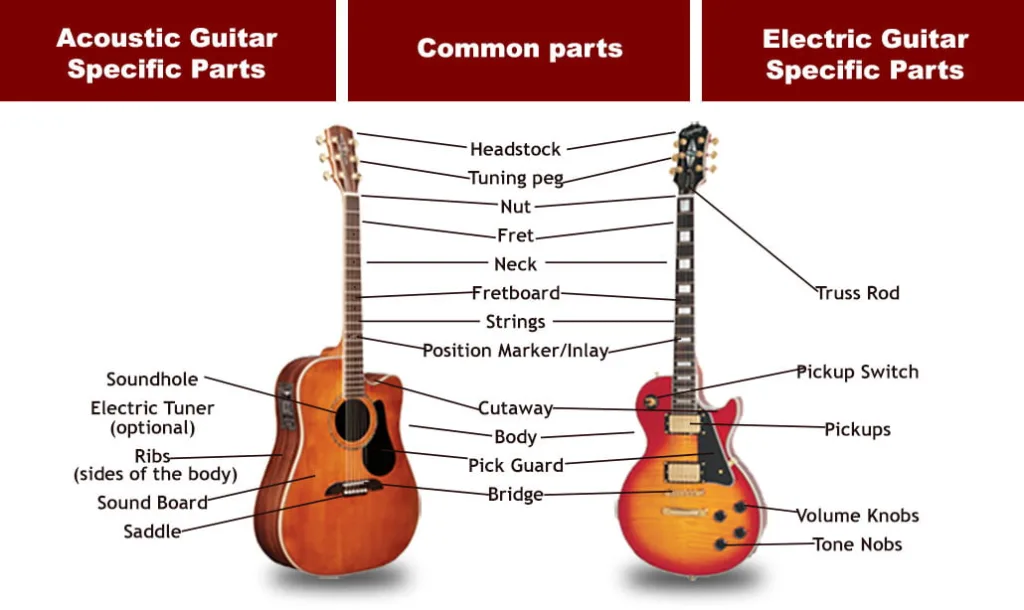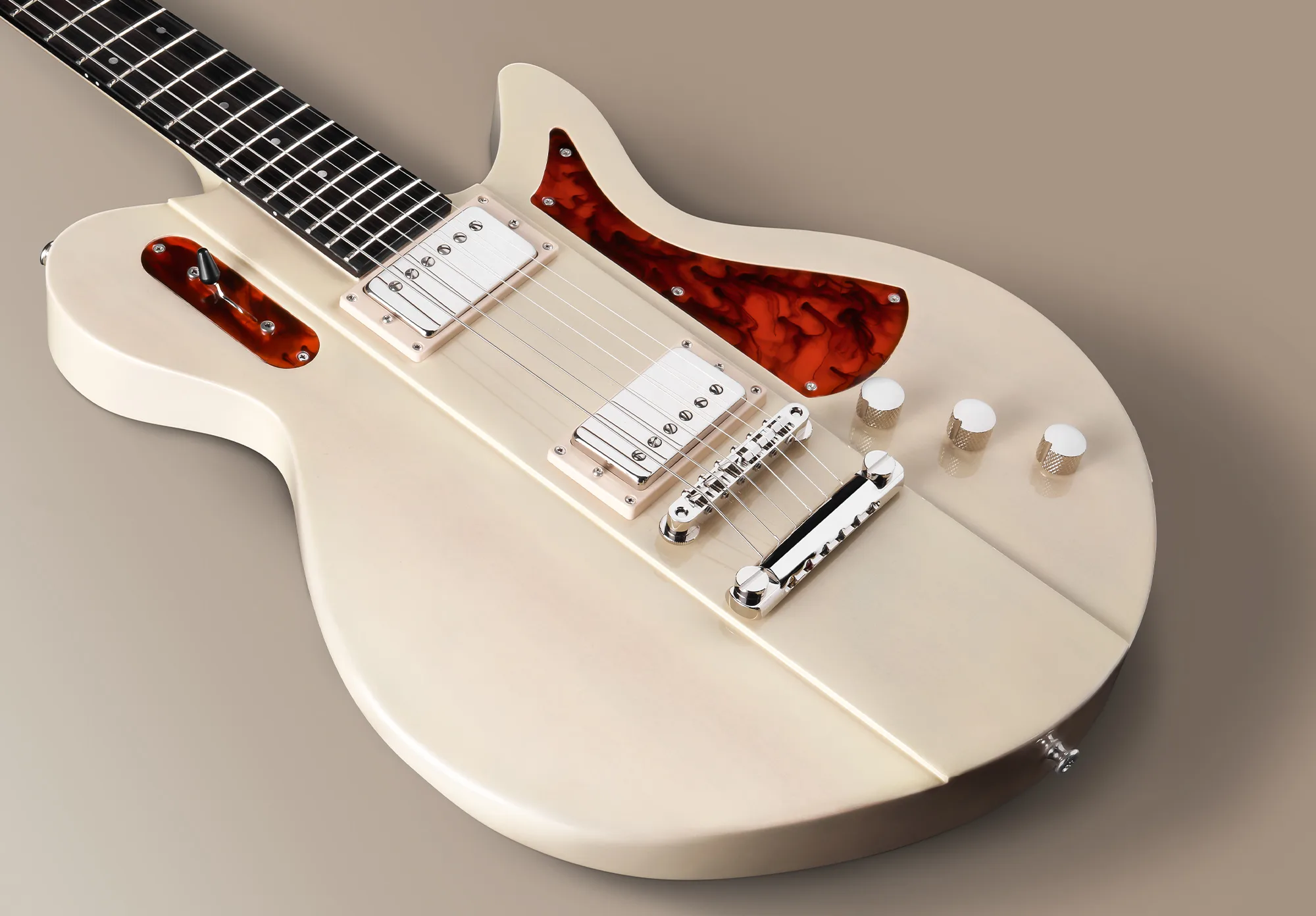Have you ever found yourself jamming on your electric guitar, only to realize it sounds more like an acoustic? Or maybe you’ve just started learning the instrument and noticed that something doesn’t quite sound right. You’re not alone! This issue is a common one among guitar players of all levels. But don’t worry, there’s a solution!
In this article, I’ll dive into the top reasons why your electric guitar may be sounding more like an acoustic and provide tips on how to fix it. From equipment issues to playing techniques, we’ll cover everything you need to know in order to get the perfect electric guitar sound. So, whether you’re a beginner or a seasoned pro, keep reading for some expert advice on how to make sure your electric guitar stays “electric”. Let’s rock and roll!
So, why does my electric guitar sound acoustic?
There could be several reasons why your electric guitar may sound more acoustic than usual. One common cause is a faulty or damaged pickup, which is responsible for converting the vibrations of the strings into an electrical signal. If this is the case, you may need to replace the pickup.
Another possibility is that your amp settings are not properly adjusted. Check to see if there are any effects or filters turned on that could be altering the sound of your guitar. You can also try adjusting the treble and bass levels to find a balance between an acoustic and electric tone.
Additionally, using certain types of strings can affect how your electric guitar sounds. Thicker strings tend to produce a warmer, more acoustic-like tone while thinner strings have a brighter, more electric sound. Experimenting with different string gauges can help you achieve the desired tone.
Finally, it’s important to consider where you are playing your electric guitar. The acoustics of a room or space can greatly impact its sound. Playing in a smaller room with hard surfaces will make it sound more like an acoustic instrument compared to playing in a larger room with softer materials.
In conclusion, if you want your electric guitar to have a true “electric” sound again, check for any technical issues such as faulty pickups or incorrect amp settings and experiment with different string gauges until you find what works best for you in terms of achieving that classic rock ‘n’ roll vibe.
Understanding the Distinct Sound Differences Between Electric and Acoustic Guitars
Let’s dive into a wildly exciting world of music, specifically focusing on the distinct sound differences between two popular instruments: electric and acoustic guitars. You may think they’re similar. After all, they both have strings and are strummed to create melodies. However, in reality, these cousins in the string family produce vastly different sounds.
A magic trick of sorts happens when you pluck an acoustic guitar’s strings. The body of this instrument serves as a natural amplifier; its hollow chamber vibrates with each stroke, creating warm tones that echo around rooms. Melodies from an acoustic guitar feel earthy and organic; it’s like storytelling around a campfire or relaxing during a beachside sunset.
- The Bass Response: Acoustic guitars generally have a stronger bass response because of their wider bodies and larger sound holes.
- The Natural Reverb: They also possess natural reverb which gives notes more sustain (longer-lasting sound), making them ideal for fingerstyle playing or self-accompanied singing.
In stark contrast to this raw beauty stands the electric guitar: sleek and modernistic. It requires an external amplifier to make its steel strings heard properly.
- The Tone Settings: These beauties come equipped with knobs to adjust tone settings — offering players nuance choices ranging from thick grunge distortion to crisp blues twang.
- The Light Touch: Electric guitars require lighter touch due to their sensitive pickups — devices under the strings that convert vibrations into electrical signals sent through amps.
In conclusion, while both types carry special charm – one sweetly echoes nature while another encapsulates modern melody invention – there is no denying those magical transformations when hands meet strings on an acoustic or electric guitar.
Identifying Equipment Issues That Can Make Your Electric Guitar Sound Acoustic
In the magical world of music, an electric guitar is a wizard in its own right. With its metallic strings and electrifying sound, it can create a symphony that transports us to a different dimension. But what happens when your rock star-like electric guitar starts sounding more like an unplugged acoustic one? It’s not just about changing your music style; rather, it could be pointing to some serious equipment issues.
Firstly, pickup malfunction is often the culprit behind this change in tone. The pickup lies under the strings and works by converting their vibrations into electrical signals. If these are faulty or damaged, they fail to fully capture the unique tonal characteristics of an electric guitar.
Next on our list of potential troublemakers would be cable problems. A frayed or damaged cable can greatly impact your instrument’s output. Also worth mentioning here are amplifier issues. An amp with weak tubes or clogged circuits might not provide sufficient power for those rocking electric riffs.
Finally, if you’ve checked all these and still find no relief then a thorough inspection of the overall wiring system could uncover other hidden problems causing this unexpected metamorphosis from electric to acoustic. This isn’t about getting stuck under technical jargon but being aware as understanding equipment conditions makes you more than just a player – it transforms you into a caring guardian for your beloved musical partner!
Read also: what kind of guitar does Oliver Anthony use?
The Role of Playing Techniques in Affecting Your Guitar’s Sound
The way you play a guitar can have a significant impact on how it sounds. This is what we refer to as playing techniques, styles or touches. It’s the uniqueness of your strumming hand, picking styles, finger positioning and strength that gives your musical notes their own personality. They all contribute to shaping the tone and color of your music.
Let’s delve deeper into some common playing techniques:
- Fingerpicking: This technique lets each string ring out clearly while creating complex textures and tones.
- Vibrato: A slight wobble in pitch brings life to the note, whether it’s fast or slow vibrato. Your preference will add depth and emotional resonance.
- Bending: By pushing strings upward or downward before plucking them gives an expressive sound often used in blues and rock genres.
You might not realize this but even where you strike, plays an essential role in generating unique timbre – striking near the bridge makes bright sharp sound whereas hitting closer to neck produces mellow tunes. So, playing techniques give every guitarist their individual voice – one that communicates emotions through melodies in ways words can’t capture! The more versatile you are with these various methods, the more distinct and powerful your music becomes.
Remember: mastering these skills takes time and patience! Don’t get discouraged if things don’t come together immediately; keep practicing until they become second nature. Happy Playing!

How to Adjust Your Amplifier and Pedals for a More Authentic Electric Guitar Sound
Setting up Amplifier
The first step to achieving a more authentic electric guitar sound lies in carefully adjusting your amplifier. This is no rocket science, but it’s just like preparing your favorite dish; you have to tweak the ingredients until it tastes right. Start by setting all your equalizer knobs (usually Bass, Mid, and Treble) at a midpoint or 12 o’clock position on most amplifiers. The volume knob should be set to a comfortable level where the intricacies of the notes can be easily heard.
- Bass: Adjust this knob until you achieve a full and rich bottom end without drowning out other frequencies.
- Mid: It determines how well your guitar cuts through the mix. Increase for prominence and decrease for blend.
- Treble: It affects brightness or sparkle of tone – too much might make it harsh while too little may result in a dull sound.
Tuning Pedals
Next comes tweaking your pedals which adds colorations to your amplified tone that further defines its character. Your distortion/overdrive pedal shapes the core tone when playing rock or metal styles – turn knobs gradually till you get desired grit without losing clarity of individual strings. Experiment with delay/reverb for spaciousness – adjust ‘time’ control until echoes sync with song tempo & ‘feedback’ knob calibrates repeat intensity.
- Distortion/Overdrive: Avoid ‘fizz’ or muddiness by not pushing gain control excessively high.
- Delay/Reverb: fine-tune these effects so they enhance rather than confuse overall sound image.
In conclusion, crafting an authentic electric guitar tone involves artistic judgement guided by experimentation – like sculpting sounds from an aural block of possibilities. And above all, remember that this process is highly personal to each guitarist. Your ‘perfect’ tone might not be someone else’s!
You may also like: samick vs yamaha piano
Simple Steps to Restore the Classic Tone of Your Electric Guitar
If you’ve been strumming your electric guitar for a while, you might notice that it’s lost some of its original resonance. But don’t worry, this doesn’t mean it’s time to buy a new one just yet. With just a few easy adjustments, you can restore the classic tone and bring back that special sound you fell in love with from the start.
Firstly, consider giving your guitar an overall cleanup. Dirt and grime can accumulate over time dulling not only its look but also its sound. Use warm water and mild soap on a soft cloth to gently clean every part of your instrument – from body to neck; be careful though, avoid getting water into any electronic parts! You will also want to examine all the hardware. Tighten loose screws or replace them if they’re rusted – remember, even these tiny bits can impact the quality of how your guitar sounds.
Secondly, pay close attention to strings. A fresh set can make a world of difference:
- Avoid opting out for cheapest ones; good quality strings have better longevity.
- Select string gauge best suited for style of music you play; lighter gauges are excellent for brighter tones whereas heavier gauges work well with lower tunings.
- Ensure each string is wound properly around tuning pegs at headstock.
Finally, check on pickups which serve as heartbeats producing distinctive sounds when plucked strings induce voltage in them. Adjust their height responsibly as volume levels vary depending upon their proximity towards strings.
Remember every little tweak counts when reviving classic tone so take time exploring what works best specifically for YOUR guitar because no two guitars are exactly alike!

